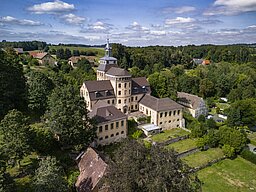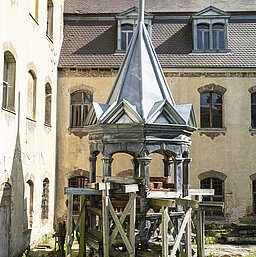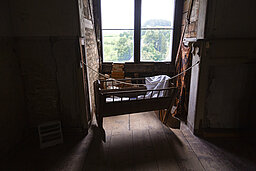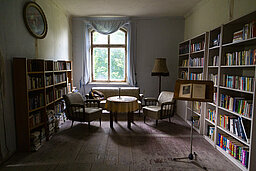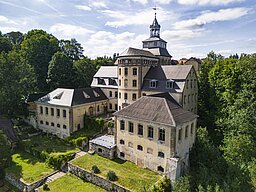

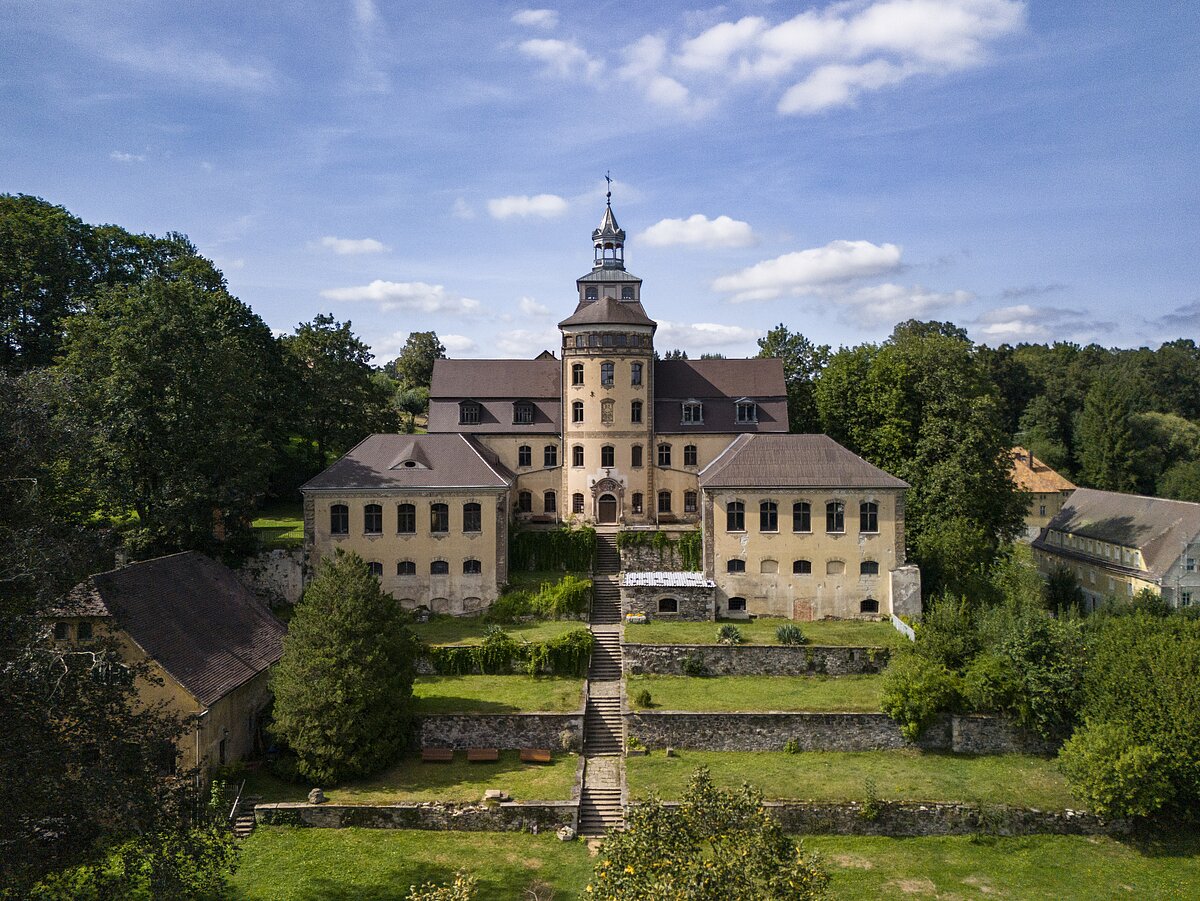
For more than 20 years, a support association has been working to preserve Hainewalde Castle, which was built in the mid-16th century as a four-sided complex around a Renaissance-style courtyard. Several orangery buildings and a new castle outside the grounds were added later. Guided tours of the castle are offered regularly, with the highlight being a large castle festival every summer.
Guided tours by appointment
By car: Take the B178 to the Großhennersdorf exit. Follow the B178 in the direction of Spitzkunnersdorf until the junction to Hainewalde. Then follow the signs.
Public transportation: Take a train to Zittau. From there, take a bus or cab to Hainewalde.
Even Hollywood has been here. In 2013, the grounds around Kanitz-Kyaw's Hainewalde Castle, which is also known as the “Sanssouci of Upper Lusatia” due to its impressive size and idyllic location on the slopes of the Mandau valley, served as the backdrop for the film “Grand Budapest Hotel”. But it wasn't just the crew led by US director Wes Anderson who were impressed by the sight of the baroque building. Hainewalde Castle and the romantic castle park with its ancient trees, a fountain, hedges, natural stone walls and a romantic, four-row avenue of lime trees are also a popular destination and photo motif for walkers, hikers and cyclists. The annual highlight of the events calendar is the medieval castle festival in summer.
Hainewalde Castle was built in the mid-18th century by the royal Prussian chamberlain Samuel Friedrich von Kanitz in the vicinity of the Old Renaissance Castle, of which only the gatehouse remains today. A sandstone staircase between the five terraces in front of the palace leads guests to the richly decorated main portal of the three-winged palace complex, which is supported by Tuscan columns. The valuable sgraffito plasterwork is well preserved, with which the baroque forms of the palace almost completely disappeared in the course of the extensive renovation under the rule of the von Kyaw family in 1882/83. The ornamental windows, plastered in this rare stucco technique, depict angels, coats of arms and mythological creatures. The fact that Hainewalde Castle is considered one of the most beautiful manor houses in the region and that the “Förderverein zur Erhaltung des Kanitz-Kyawschen Schlosses Hainewalde e. V.” has been working to restore and revive it for more than 20 years is also evident at the rear of the main building. The highlight here is the keystone of the door portal in the shape of a Gorgon or Medusa head.
Visitors repeatedly come across symbols of Freemasonry on their tour around and through Hainewalde Castle. For example, in the “Green Salon”, one of the most representative halls in the castle. The coats of arms of the 13 Saxon Masonic lodges have been worked into the parquet flooring. The arrangement of the pillars and the initials J (for Jachin) and B (for Boas) on the north portal are probably also based on the humanist thinking of the former owners of the castle.
Just like the castle itself, which is now owned by the municipality of Großschönau, the adjoining ensemble of baroque church, school, hospital, rectory and the Kanitz-Kyaw crypt blends into the beautiful landscape near the Zittau Mountains. The family crypt, decorated with life-size allegorical figures, is one of the most important burial monuments in Saxony.
